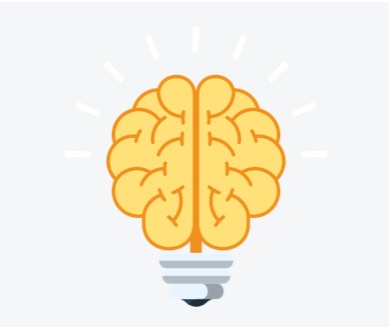
The way we are working isn’t working anymore, and hasn’t been for some time. Checking email in bed the moment we awake, chugging too much coffee, hour-long commutes twice each day…they all take a toll on the quality of our work and our lives.
Not to mention that when we get to the office, many of us are often marginalized and overworked. Our efforts and ideas are ignored during 50 or 60+ stressful hours each week. Some of us are treated more like numbers than people, as companies choose stack ranking systems over weekly conversations and gathering employee feedback. But all is not lost, the movement toward people-centered leadership is well under way.
The better we understand ourselves as leaders, the better we understand the capabilities and limitations of those who work for us. This new leadership paradigm involves constant learning about all of the elements of a healthy, balanced life. Research in the areas of neuroscience, biology, and human performance have produced some brilliant and counter-intuitive ideas about getting more accomplished in less time. I have shared these methods for understanding and achieving potential with my team, and now I will share them with you:
Neuroplasticity
I am not a neuroscientist, but I do play one at work. By that I mean that I am constantly reading about new discoveries regarding mental health, brain chemistry and the science of productivity. I use this information to become a better leader and share it with my team so that they can be happier and more productive.

The better we understand ourselves as leaders, the better we understand the capabilities and limitations of those who work for us.
The prevailing wisdom used to be that people are mentally malleable for only a number of years until we reach adulthood. At that time we are fixed in terms of our mental capacities and behaviors. New research posits that the adult brain has an incredible capacity for change. Safe environments, healthy diets, exercise, and meditation practices can destroy unhealthy neural pathways and essentially rewire our brains.
In other words, employees are not fixed-resources. With supportive leadership, sufficient challenges, minimal stress, and a healthy lifestyle they can be transformed into the best versions of themselves. Their innate talents can evolve. Good employees can become great, and great employees can become excellent.
Stress Hormones and the Paleo-mammalian Brain
Did you know that you have three brains?
The most ancient structure is the reptilian brain, so named because it is made up of the stem and cerebellum. These structures also appear in reptiles, animals that lack the more developed brain components described below. The reptile brain is ancient, controlling heart rate and breathing and designed to protect us.
When people feel unsafe at work, their more primitive brain structures are activated, and they can’t access their frontal lobes to innovate.
The next structure, the limbic brain, is shared by all mammals. It is where emotions, memories, and aggression live, and it controls much of our behavior. When we worry about our social lives and relationships, we recede into our limbic brains.
Finally, we humans and other primates have a specialized structure called the neo-cortex. This structure, also called the frontal lobe, is responsible for language and abstract and creative thinking.
Why does this matter in the world of business? Because everyone is looking for ways to increase innovation and creativity. These are the differentiating factors in just about every industry. When people feel unsafe at work, their more primitive brain structures are activated, and they can’t access their frontal lobes to innovate.
You can’t say to employees, “innovate or your fired”. Fear will trigger their brains to start producing adrenaline and cortisol, and their creative minds will shut-down. Even if you aren’t that blunt, creating an unsafe and stressful environment is bad for employees and for businesses.
Pulse Your Productivity
How many of us read emails or take calls during our commutes, then go right to our desks where we flit back and forth between projects and communications for hours at a time? Sound like your day? You’re probably not alone.
The truth is we are not designed to work that way. Our bodies and minds follow a daily cycle called a circadian rhythm – “physical, mental and behavioral changes that follow a roughly 24-hour cycle, responding primarily to light and darkness in an organism’s environment”.
Think of healthy sleep. You don’t simply close your eyes and enter one state of sleep for eight hours, then awaken. We shift between several 90 minute cycles of deep restorative sleep and lighter, dream-filled REM sleep.
Turns out, this is how we were meant to work also. Going full-throttle for eight hours goes against our design. During the day, we cycle through ultradian rhythms. These are periods where we are more and less-focused.

The ideal rhythm is to work four or five 90-minute chunks throughout the day, with breaks in-between. A good practice is to schedule three important tasks a day that you can fit into these segments, and set a timer (not on your phone!) to manage your rhythm. Or if you are tuned-in to your body’s signals, just notice when you get restless, groggy or lose focus. That means it’s time for a 15-minute break.
Flow states
The more a job resembles a game – with variety, appropriate and flexible challenges, clear goals and immediate feedback — the more enjoyable it will be regardless of the worker’s level of development.
~ Mihaly Csikszentmihaly from his bestselling book, Flow
Have you ever gotten so into something that all sense of self or your surroundings melts away? This often happens during passive experiences like watching a captivating film or television show. We can also enter these flow states during activities. When a basketball player seems to be repeatedly flying down the court, making every shot for several minutes, they are in flow.
At work, flow is more difficult to attain. We are bombarded by distractions from a multitude of different communication tools like email, text messages, video conferencing, or phone calls. We vacillate between the various goals that must be accomplished by the time the whistle blows, instead of focusing on one task at a time – a demonic ritual called multitasking.
Flow states require setting goals that are just challenging enough so that a person can keep their attention focused for a sustained period of time. Then we must remove all distractions from our workspaces. Finally, it needs to be clear to us that we are succeeding at each task that we are trying to achieve. When we can enter these states we dramatically increase the quantity and quality of our work, and the satisfaction we feel from doing it.

Leaders must possess certain natural skills and talents, but these must also be augmented by information about how and why people perform at their peak. Once managers understand that people are designed to grow and improve, they can create environments that are most conducive to high performance.
Read Next: 6 reasons why exercise can supercharge your productivity
Image credit: Shutterstock
This post first appeared on 15five.
Get the TNW newsletter
Get the most important tech news in your inbox each week.